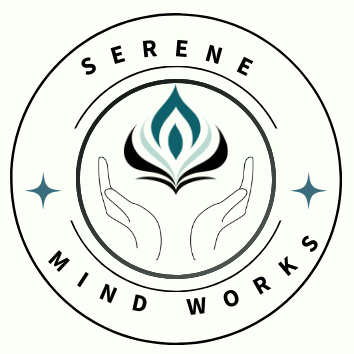
Mindfulness isn’t just about sitting still and breathing deeply. It’s about finding your center amid the chaos and understanding your mental landscape when things get a bit wobbly. We’re talking about a practice rooted in being fully present, aware of where you are, and what you’re doing. It’s the pause that lets you jump off the hamster wheel of anxiety and depression.
Anxiety and depression often feel like they hit out of nowhere, wrapping you up in thoughts and feelings that are tough to untangle. The world seems to spin faster, and the mind becomes a noisy place. This is where mindfulness steps in—offering a shot at clarity amid confusion. It nudges you to observe your thoughts without judgment, transforming your mind from a battleground into a peace haven.
People-first content and the E-E-A-T principles guide you towards creating and finding credible, helpful information in a world overloaded with noise. With mindfulness, it’s not just about expert advice. There’s experience, authoritativeness, and a trust in knowing you’re following something that’s been tried, tested, and rooted in solid science.
Using mindfulness as a bridge, you begin to shift from emotional turmoil toward a more balanced state. It’s not magic; it’s about cultivating awareness of your inner and outer world, gently coaxing your mind away from the storm to a place of calm. Trust that with practice, this bridge can hold even when life feels unstable.
How to Practice Mindfulness for Anxiety and Depression
Getting started with mindfulness doesn’t need to be complicated. It’s about forming small habits that create big impacts. Begin with carving out a few quiet minutes from your day to just be. This doesn’t mean your mind won’t wander; it definitely will. The key is to gently bring your focus back with kindness rather than frustration.
Incorporating mindfulness into your daily routine can be as simple as turning everyday tasks into mindful moments. When you wash dishes or take a shower, focus on the sensations, the temperature, and the textures. This isn’t about perfecting a ritual, but about being fully present in the moment.
View mindfulness as a powerful tool in your mental health toolbox. It’s something you pick up and use. It’s not about having zero thoughts but about observing them without attachment. Let them float by like clouds rather than letting them rain on your day.
Studies show that regular mindfulness practice leads to lower levels of stress, reduced symptoms of depression, and increased feelings of overall well-being. This translates to better sleep, improved focus, and even enhanced relationships. It’s about building a healthier relationship with your mind, one day at a time.
The 5 R’s of Mindfulness: A Framework for Consistency
Creating a consistent mindfulness practice can feel more manageable with a bit of structure. Enter the 5 R’s: Recognize, Respond, Replay, Refresh, and Reinforce. Each ‘R’ serves as a stepping stone to build and maintain your mindful path.
- Recognize: is all about awareness. It’s recognizing your thoughts, emotions, and sensations as they are rather than how you wish them to be. This sets the foundation by giving you a clear starting point in your practice.
- Respond: emphasizes choice and reaction—or lack thereof. Instead of reacting impulsively to thoughts like anxiety, encourage a measured, thoughtful response. This can help you feel more in control and less overwhelmed by emotions.
- Replay: involves evaluating what’s working and what’s not. Reflecting on your practice lets you see patterns and areas for growth without falling into a cycle of self-criticism.
- Refresh: is about renewal. Sometimes, giving your practice a fresh perspective or re-energizing your routine can bring back focus and motivation when things start feeling a bit stagnant.
- Reinforce: is all about consistency. Cementing your practice happens through regular check-ins and reminders of why you started in the first place. It keeps your efforts aligned with your mental health goals.
Deciphering the 3 C’s of Mindfulness: Connect, Control, and Cultivate
Mindfulness is like a toolkit for the mind, and within it, you’ll find the 3 C’s: Connect, Control, and Cultivate. Each offers a unique layer to help navigate anxiety and depression.
- Connect: is about diving into the relationship with yourself. It means being present with your thoughts, observing your mental and emotional state without judgment. This self-awareness is like tuning in to your own frequency, which helps in understanding and managing your emotional responses better.
2. Control: doesn’t imply suppressing emotions or thoughts, but regulating them. It’s about choosing how to respond to your feelings instead of letting them dictate your actions. It’s like steering the ship in stormy seas—difficult but possible with practice.
- Cultivate: involves nurturing the environment that supports your mindfulness practice. This includes setting intentions, creating a space free from distractions, and perhaps even involving loved ones or a community for support. It ensures the practice isn’t a solo journey but part of a larger ecosystem that includes learning and growth.
The 3 C’s work best when integrated into daily life. They empower you to transform negative thought loops into a more manageable and positive dialogue with yourself. It’s not about perfection, but progress, making the mind a kinder, more peaceful place to inhabit.
Four Core Mindfulness Techniques and Their Impact on Well-being

Mindfulness comes with a toolkit loaded with techniques to ground, soothe, and center. Among the many, four stand out: Breathing, Grounding, Visualization, and Body Scan. Each offers its own path to mental clarity and emotional stability.
- Breathing exercises are a cornerstone of mindfulness. They work wonders in calming the ever-churning mind. Deep, intentional breaths can bring you back from a cascading waterfall of anxiety to a gentle stream of calmness. It’s the simplest, yet most effective tool for instant relief.
- Grounding exercises help anchor you to the present. When you feel overwhelmed, focusing on the five senses—naming things you can see, hear, smell, touch, and taste—works like magic to pull you back into now.
- Visualization involves creating mental images to soothe the mind. Whether it’s a peaceful beach or a cozy cabin in the woods, visualizing a serene place can lower stress levels and enhance relaxation.
- Body Scan is about maintaining a deep connection with your body. By progressively focusing on each part, you learn to let go of physical tension and become more in tune with how your body responds to emotional stress. It helps in acknowledging what your body is trying to tell you.
These techniques can be used individually or in concert, providing flexibility to address whatever your mind and body might be experiencing. Regular practice opens up a space in your day-to-day life—a space where you respond thoughtfully rather than react impulsively, leading to reduced anxiety and depression symptoms and better quality of life.
